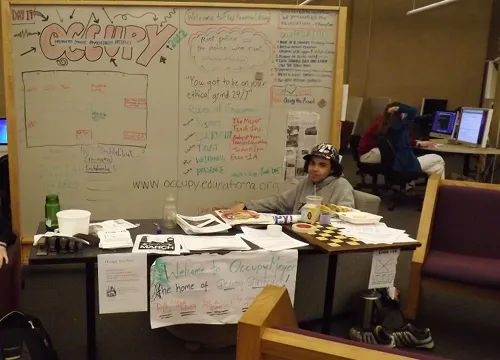Table of Contents
Opinions differ over whether police measures were justified in quelling student protesters at a UC Davis’ Occupy rally last November. Since the incident, the topic has sparked a debate in higher education, both at Davis and nationally, over what constitutes an appropriate use of police tactics on peaceful protesters.
When asked how Stanford Police would have responded in the same situation, Laura Wilson, director at Stanford Department of Public Safety and police department spokesperson, stated, “I don’t think I have all the facts to make that assessment.”
She continued, “I think that we must be careful to evaluate the facts as they were known at the time to the officers and those making decisions.”
The Department of Public Safety confirmed that it is against policy to use OC-spray (pepper spray) on peaceful protestors.
But Wilson did explain that she was uncertain as to whether or not the protest at UC Davis was violent. “What it unclear to me about the UC Davis incident is whether the officers believed [that] a conspiracy to commit a lynching was taking place, which would not be the same situation as a peaceful protest,” she explained.
The Occupy protests at Stanford so far have been tame compared to those at UC-Berkeley and UC-Davis. When asked why this might be, Wilson stated, “I would only be conjecturing as to why we have not seen similar types of protests.”
But she continued, “I’d like to believe part of the reason is that individuals have elected to pursue ways of expressing their opinions using different means.”
Stanford Occupiers began in White Plaza holding general assemblies, but have since moved much of the movement into Meyer Library, where they occupy a few benches and a white board in the center of the building.
“Some students have engaged in the Occupy Movement both on-campus and off-campus as well as the Occupy-the-Future movement,” Wilson explained. “So far, everyone’s behavior on campus has been in-line with the law and the Fundamental Standard.”
Many students came out in solidarity with the student protesters at the UC Berkeley Occupy protest, showing their support at a rally before Big Game last November. The events at Berkeley and Davis are certainly on the minds of those still participating in Occupy Meyer.
“When you have police pepper spraying students it is indicative of the larger violence institutionally against public school students with the gutting of public education,” stated Luke Wigren, a recent alumni and participant in Occupy Meyer.
Another participant, Eric Sapp, commented, “It would be also good to know what Stanford police’s arsenal of non-violent weapons is.”
When asked about freedom of speech regulations at Stanford, Wilson replied, “What I can say is that the police officers I work with take to heart the oath they took to support and defend the Constitution of the United States, which includes protecting the right to assemble and express one’s opinion.”
The university itself has been open to the Occupy movement at Stanford, and even allowed an offshoot of the movement to hold “Occupy the Future” last December. The movement was aided by the Haas Center for Public Service. The University maintains that it remains neutral to the movement as a whole, though.
A statement from President John Hennessy’s office read: “It is not possible for the Office of the President to endorse movements, and no campus entity is permitted to endorse political movements on behalf of the university.”





